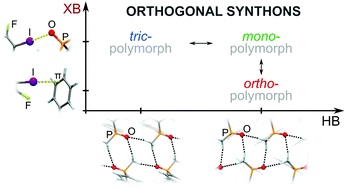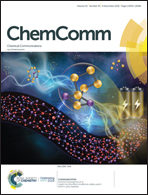Cocrystal trimorphism as a consequence of the orthogonality of halogen- and hydrogen-bonds synthons†
Abstract
True trimorphic cocrystals, i.e. multi-component molecular crystals of identical composition that exhibit three polymorphic structures, are exceedingly rare and so far no halogen-bonded cocrystal system has been reported to exhibit trimorphism. Here we describe a unique example of a trimorphic cocrystal exhibiting both hydrogen and halogen bonds in which the differences between polymorphs reveal their orthogonality, evident by the apparently independent variation of well-defined hydrogen- and halogen-bonded motifs.



 Please wait while we load your content...
Please wait while we load your content...